On March 11, we celebrate the feast day of Saint Aurea (Santa Oria, 1042-1069) of San Millán de la Cogolla in Rioja, Spain. Saint Aurea, a virgin of the Church, demonstrated great love for the Lord, enclosing herself as an anchoress, working miracles, and receiving holy visions. Much of what we know about her life was recorded by Gonzalo de Berceo in his epic poem, Vida de Santa Oria.
Aurea was born of “ good and religious parents,” Garçía and Amunna, in the village of Villeveyayo, Spain. The region of Aurea’s birth had earlier been invaded by the Moors, and she was raised under Moorish control. Despite this, she felt drawn to the Scriptures, meditating on and studying them from an early age. Aurea also had an unquenchable love for the saints, reading and studying the lives of the early martyrs of the Church. She was particularly fond of Saints Agatha, Eulalia of Merida, and Cecilia, whose lives she attempted to emulate with her own.
Aurea felt drawn to the religious life, and chose to become an anchoress attached to the cathedral at San Millan de la Cogolla. There she is said to have lived an austere monastic life, and was graced by three visions of her favorite saints, encouraging her to live her faith more devoutly.
In the first vision, which occurs on the feast of Saint Eugenia, virgin martyr of the Church, Saints Eulalia, Agatha, and Cecilia descend to Aurea’s cell, taking her to the glory of heaven with them. While she at first refuses to ascend to heaven, she eventually consents, moving with the Saints upward along a grand column, and coming to rest in the branches of a stately tree. The saints are assisted to heaven by angels, whereas Aurea is lifted by a dove. Upon arrival in heaven, Aurea witnesses processions of the faithful, including some she knows. She is further informed by the virgin martyrs that a place has been reserved for her in heaven. An empty chair and palace are shown to her, her places of rest for eternity. But the voice of Christ informs her that it is not yet her time, and that she must return to her body for some time.
Aurea was heartbroken at having to leave heaven, begging Christ to allow her to stay, but is obedient, and returns to her cell upon His direction. She deepened her faith and recommitted herself to her ascetic life, discussing the visions with her spiritual director, but praying to not fall victim to pride in their occurrence. Despite her humility, word of her visions spread, and she became sought out for advice and prayer. Through her intercession, many miracles were claimed.
Almost one year later, towards the beginning of November, Aurea is graced with a second vision, during which the three Saintly virgin martyrs return to Aurea’s cell, this time bringing a large and luxurious bed with them. Aurea refuses to join them on the bed, at which time they bodily throw her onto it. Her cell, previously bare, is suddenly filled with virgins, and the Blessed Virgin Mary, Our Holy Mother, appears, conversing with Aurea. When Aurea asks for a sign from the Blessed Mother that the visions are true, she is told that she will soon become ill and die. Aurea is shown a glimpse of her future bodily suffering as a promise of her imminent journey to heaven.
True to the message of the Blessed Virgin, Aurea was stricken with a painful disease, one which she suffered with little complaint and great courage. Nearing the end of her strength, Aurea drifted in and out of consciousness, during which she experienced her final vision. During this third vision, Aurea is transported to the Mount of Olives, where she is surrounded by men dressed in white. She was awakened prematurely from her vision by her mother, and following a brief conversation, during which she refused to speak any more of her visions, Aurea died at the young age of 27. The monks and religious of the community kept vigil over her body until her burial. Numerous miracles have been reported at her grave.
At a young age, Saint Aurea devoted herself to the Lord, sealing herself into a tiny barren cell, and giving up all worldly pleasures. She prayed tirelessly and demonstrated great devotion to God, the communion of Saints, and the Blessed Mother. As a reward, she was offered a promise of heaven to encourage her in her vocation. Through her intercession, many were healed and miracles were wrought. In our daily lives, we don’t generally receive visionary promises of heaven like Saint Aurea did. But we are certainly graced by glimpses of heaven, and experiences of God in those we encounter. We only need look for them. The life and visions of Saint Aurea encourage us to remain focused on the Lord in our daily lives, finding glimpses of heaven in the love and kindness of those we interact with, and being mirrors of His great love to all we meet.
Day 70 of 365
Prayer Intentions: Finding glimpses of heaven in those we meet.
Requested Intentions: The blessing of children (S); Safety of travelers (J); Improved family relationship with the Lord, using gifts for His glory (L); For the orphans of Saint Francis Xavier in India (Fr. B); For the health of a family member with Rett’s Disorder (C); For the restoration of hearing (L); For a restorative, faith-deepening Lent for all those who are struggling (L).
Special Intentions (Day 29 of 45-day Novena to Our Blessed Lady of Lourdes): The intentions of all those who read this blog, whether submitted or retained in the quiet of their hearts; Penance, Penance, Penance for sinners; For all those who are suffering.
Why pray the Rosary every day for a year?
Each time the Blessed Virgin has appeared-- whether it be to Saint Bernadette Soubirous at Lourdes; to Lucia, Jacinta, and Francisco at Fatima; or to Mariette Beco at Banneux-- she has asserted the importance, saving grace, and power of praying the Holy Rosary on a daily basis. Based upon her words, the Rosary is penance and conversion for sinners, a pathway to peace, an end to war, and a powerful act of faith in Jesus Christ. Pope Paul VI presented the Rosary as a powerful means to reach Christ "not merely with Mary but indeed, insofar as this is possible to us, in the same way as Mary, who is certainly the one who thought about Him more than anyone else has ever done."
To show us how this is done, perhaps no one has been more eloquent than the great Cardinal Newman, who wrote: "The great power of the Rosary consists in the fact that it translates the Creed into Prayer. Of course, the Creed is already in a certain sense a prayer and a great act of homage towards God, but the Rosary brings us to meditate again on the great truth of His life and death, and brings this truth close to our hearts. Even Christians, although they know God, usually fear rather than love Him. The strength of the Rosary lies in the particular manner in which it considers these mysteries, since all our thinking about Christ is intertwined with the thought of His Mother, in the relations between Mother and Son; the Holy Family is presented to us, the home in which God lived His infinite love."
As Mary said at Fatima, "Jesus wants to use you to make Me known and loved. He wishes to establish the devotion to My Immaculate Heart throughout the world. I promise salvation to whoever embraces it; these souls will be dear to God, like flowers put by Me to adorn his throne."
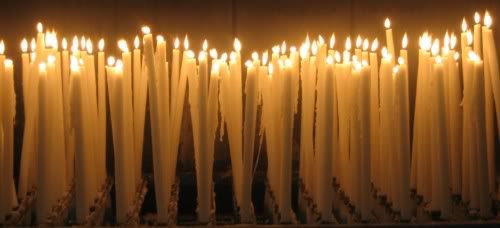
Subscribe to:
Post Comments (Atom)

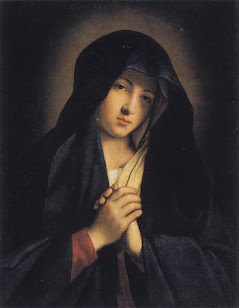
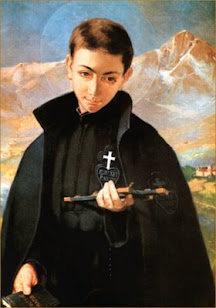



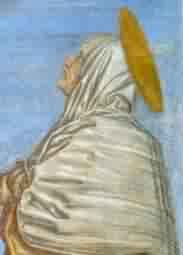

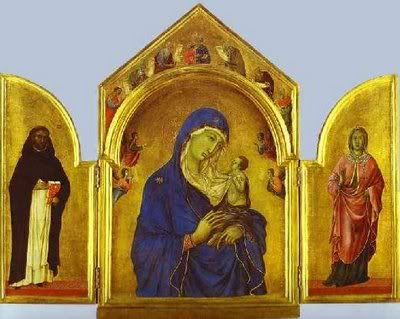
0 comments:
Post a Comment
Thanks for leaving a comment. If you wish to submit a prayer request, however, please do so above, using the "Contact" tab.